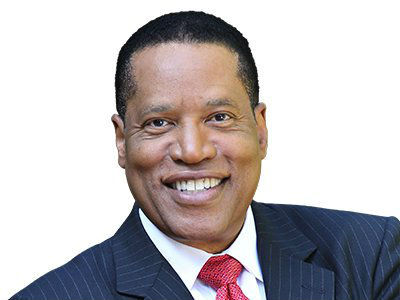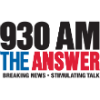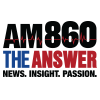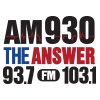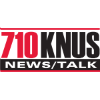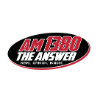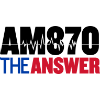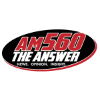7 exercises to reduce belly fat after 40, from top trainers
Lifestyle

Audio By Carbonatix
9:30 AM on Monday, September 22
By Amanda Capritto for Hone Health, Stacker
7 exercises to reduce belly fat after 40, from top trainers
One sign that midlife is coming in hot is what the Internet loves to call menopause belly. Technically, it’s increased natural fat accumulation in the midsection that typically happens during midlife. In practical terms, it’s a soft, rounded pouch that makes you look bloated 24/7.
If you’re finding this new soft layer of padding atop your abs, you might also have noticed that your tried-and-true exercise routine isn’t making it budge.
The surprising solution isn’t more exercise overall; it’s targeted exercise. Specifically, smart approaches to cardio and strength training, experts say. Hone Health dives into the details.
Effective Exercises to Combat Belly Fat
Hormonal fluctuations are the primary driving cause of belly fat in women. Estrogen helps regulate where fat is stored in the body, according to Patricia Greaves, fitness specialist and founder of StrongHer Personal Training. “When estrogen levels decrease, fat is predominantly stored in the stomach instead of the hips and thighs.”
Additionally, less estrogen in the body can contribute to insulin resistance, driving up fat mass and weight gain.
Strength Training Exercises
Studies have shown that strength training with weights can reduce visceral fat, which commonly accumulates in the stomach as you age. Resistance exercises increase muscle mass, which maintains a healthy metabolism and helps the body effectively process energy.
“Strength training will build lean muscle mass, which will keep your metabolism strong,” says Antonietta Vicario, a certified yoga and pilates instructor and Chief Training Officer at Pvolve. “Having a strong metabolism helps reduce the likelihood of visceral fat.” As a bonus, resistance training also relieves anxiety and depression, reduces fall risk, and boosts bone density.
Focus on training all muscle groups using weighted, multi-joint exercises, such as squats and deadlifts, Greaves suggests. Exercises that work more muscle groups burn more calories. A good place to start with these exercises is three sets of 10 reps, once a week, for each exercise. For beginners this would typically be split into two resistance training sessions a week.
Dumbbell squats
Squats are one of the most energy-intensive weightlifting exercises out there. They burn a ton of calories, especially if you lift heavy, so they’re a great choice for women looking to lose belly fat.

How to do dumbbell squats:
- Stand with feet shoulder-width apart. Hold a dumbbell in each hand at shoulder level with elbows bent and pointing slightly forward (front rack position).
- Keep your chest up and engage your abdominal muscles.
- To initiate the squat, push your hips back and bend your knees, lowering into a squat. Keep the dumbbells steady at shoulder height.
- Lower until your thighs are parallel to the floor or as low as your mobility allows without losing form. Don’t arch your back or let your chest dip forward.
- Press through your heels to stand back up, maintaining a proud chest and upright posture.
Recommended starting weight range: Beginners should start with dumbbells ranging from two to 10 pounds each.
Deadlifts
Deadlifts are a powerhouse of an exercise for combating belly fat. They work every major muscle group, with the hamstrings and back muscles being the primary movers. Due to its full-body nature and the fact that most people can lift more in the deadlift than in any other lift, it’s a great exercise for women who want to prioritize fat loss and boost metabolism.

How to do dumbbell deadlifts:
- Stand with feet hip-width apart, dumbbells at the sides of your thighs, palms facing your body.
- Hinge at hips: Slightly bend your knees; then push your hips back while lowering the dumbbells down along the sides of your legs.
- Keep your back flat and chest lifted. Dumbbells should stay close to your body.
- Stop lowering when you feel a strong hamstring stretch—usually when the weights hit just below the knees or mid-shin.
- Drive hips forward to stand tall, squeezing glutes at the top.
Recommended starting weight range: Beginners should grab weights ranging from 10 to 20 pounds.
Hip thrusts
Hip thrusts do more than build your butt. They also target belly fat by engaging almost all of the lower-body musculature and recruiting muscles across the core and back. Like all compound lifts, when performed with heavy weights, hip thrusts can have a big impact on overall calorie burn during your lifting session.

How to do dumbbell hip thrusts:
- Sit on the floor with your upper back resting against a weight bench. Roll a dumbbell onto your hips (use a pad or towel for comfort if needed).
- Bend your knees and place your feet flat on the ground, hip-width apart. Engage your abs and flatten your lower back slightly.
- Driving through your heels, lift your hips, and squeeze your glutes until your thighs are parallel to the floor and your body forms a straight line from shoulders to knees.
- Bring hips down without relaxing fully or touching hips to the floor between reps.
Recommended starting weight range: Beginners should start with weights of five to 10 pounds.
Thrusters
Thrusters combine a squat and a shoulder press into one calorie-torching exercise for belly fat. Not only does this advanced exercise work nearly every muscle group in the body, but it also emphasizes core strength, stability, and coordination.

How to do dumbbell thrusters:
- Begin in a front squat setup with dumbbells at shoulder height.
- Perform squat: Lower into a full squat as described in the dumbbell front squat. As you lift upward, use the momentum to press the dumbbells overhead.
- Finish with arms straight overhead and body fully upright.
- Bring the dumbbells back to shoulders and immediately descend into the next squat.
Recommended starting weight range: Weights ranging from two to 10 pounds are a good place to start.
Core Workouts
The best core workouts for hormone belly fat target surrounding muscle groups, rather than the stomach directly. A combination of compound strength exercises and heavy weighted exercises enhance stability in the abs and obliques, which promote a leaner waist, Greaves says.
As your body changes, so should your approach to ab workouts. “Doing crunches every day is counterproductive because they work the same muscles, not giving them a chance to rest and recover,” explains Greaves.
Instead of focusing solely on the stomach, women should try unilateral exercises, which work one side of the body at a time. Challenging your muscles and balance with this type of movement engages your core, targeting the obliques and building stability.
While strengthening the core muscles won’t burn belly fat directly, notes Greaves, “it will tighten and tone the area, improving posture and minimizing belly protrusion.”
Shoulder press
You might not think upper-body moves torch belly fat, but they do—by engaging the muscles in your core and lower body. The result: A full-body movement that revs your body’s energy systems and builds muscle.

How to do dumbbell shoulder presses:
- Stand with feet hip-width apart. Hold dumbbells at shoulder height, elbows slightly in front of your torso, palms facing forward or inward.
- Engage your core and your glutes to avoid overextending your lower back.
- Press the dumbbells overhead until your arms are fully extended and your biceps are near your ears, pausing for one second at the top.
- Slowly lower the dumbbells back to the start position.
Recommended starting weight range: Start with dumbbells of two to five pounds each.
Push-ups
Push-ups are a great exercise because they require stabilization in the core, back, and glutes. Fortunately, it’s not necessary to do push-ups from a full plank position. You can modify them by keeping your knees on the floor (knee push-ups) or placing your hands on a wall or bench (incline push-ups).

How to do push-ups:
- Begin in a high plank with hands under your shoulders, feet hip-width apart. Your body should form a straight line from head to heels.
- Bracing your core and glutes, bend your elbows at about a 45-degree angle to lower your chest toward the floor. Avoid sagging or arching your back.
- Aim to get your chest about a fist’s width from the ground without losing core engagement.
- Push back up, driving through your palms to return to the plank position.
Recommended starting reps: Beginners should try for three sets of 10 push-ups.
Bird dog
Bird dogs challenge your core unilaterally by balancing oppositional limbs. Like push-ups and shoulder presses, this bodyweight exercise works most major muscles and requires a great deal of stabilization in the core and glutes. For added resistance, add ankle and/or wrist weights.

How to do bird dogs:
- On a mat, get down onto all fours (quadruped position) with hands directly under shoulders and knees directly under hips. Keep a neutral spine (avoid arching or rounding your back).
- Draw your belly button gently toward your spine to stabilize your trunk. Avoid shifting your hips or ribcage.
- Simultaneously extend your right arm forward and left leg straight back.
- Once you reach full extension, pause for 1–3 seconds while maintaining balance and alignment. Keep your back flat.
- Slowly, with control, bring your arm and leg back to the starting position.
- Repeat with the left arm and right leg.
Recommended starting reps: Beginners should try for three sets of 10 extensions on each side of the body.
Cardio Workouts
A 2024 research review in “JAMA Network Open” found that every 30-minute dose of aerobic exercise was associated with reduced body weight, waist circumference, and body fat, including visceral fat.
Research on postmenopausal women specifically, in the journal Medical Science Sports Exercise, found that higher levels of aerobic activity led to less fat gain over time, especially among women aged 50 to 59.
Adult women should aim for 150 minutes of moderate-intensity cardio exercise or 75 minutes of vigorous-intensity cardio exercise per week, per the National Institutes of Health. That comes out to about 22 minutes per day for moderate cardio and about 11 for vigorous cardio. Aim for a mix of both types of cardio each week, as they enhance your fitness in different ways.
Walking
Walking offers numerous health benefits, including a reduction in belly fat. A 2008 study of 259 postmenopausal women found that a 12-week walking program reduced waist circumference and average BMI.
Walking, especially at a brisk pace, improves insulin sensitivity and is known to reduce abdominal fat. And although walking isn’t strength training, which helps preserve muscle mass and maintain resting metabolic rate, it does increase daily energy expenditure and reduce sedentary time, helping to prevent further metabolic slowdown.
And unlike high-intensity exercise, which can be hard on joints or inconsistent with energy levels, walking is low-impact. It’s also easily accessible, so you’re more likely to sustain the habit long-term, which is key for meaningful body composition changes.
Running
Running is an excellent way to reduce belly fat, and it’s backed by science. Women in perimenopause and menopause who practice vigorous exercises like running have less body fat, a smaller waist circumference, and lower BMIs on average. If you want to start running, begin with one short, moderate run per week—10 to 20 minutes at a pace that allows you to carry on a conversation—and work your way up from there. You might add two to five minutes to your run each week, and try adding a second run after four weeks.
Swimming
Aquatic resistance exercises like swimming are linked with a reduction in belly fat, as well as increased performance with exercises like squats and crunches. And while less fat is an obvious cosmetic benefit, swimming also supports improvements in cardiovascular health. It can be done at low, medium, or high intensities, depending on your fitness level and comfort in the water.
High-intensity interval training (HIIT)
Compared to other types of cardio, high-intensity cardio has greater potential to decrease visceral stomach fat in middle-aged women. HIIT involves a short burst of high-intensity exercise, such as sprints, jump squats, cycling, or swimming, followed by an interval of rest, usually 30 seconds for each. HIIT workouts shouldn’t last longer than 10 to 20 minutes. Be careful not to overdo it on the HIIT: Some research suggests that extended cardio at high intensities may contribute to cortisol spikes.
Yoga and stretching
Mobility training—taking the joints of the body through their full range of motion—can help reduce belly fat and increase overall weight loss in a few ways. One is by preventing musculoskeletal issues and injury, Vicario says, so you can exercise consistently. Another is by helping your body move more efficiently during strength training. When you can get deeper into your range of motion, you’ll recruit more muscle fibers, she adds.
Recovery
During midlife, exercise and recovery go hand in hand. “Arming yourself with techniques to reduce cortisol in the body can help offset the effects of declining estrogen, which can lead to weight gain,” explains Vicario.
Take time for yourself, practice breathing exercises, meditate, do some light stretching, go on an easy walk, and get enough sleep.
This story was produced by Hone Health and reviewed and distributed by Stacker.



